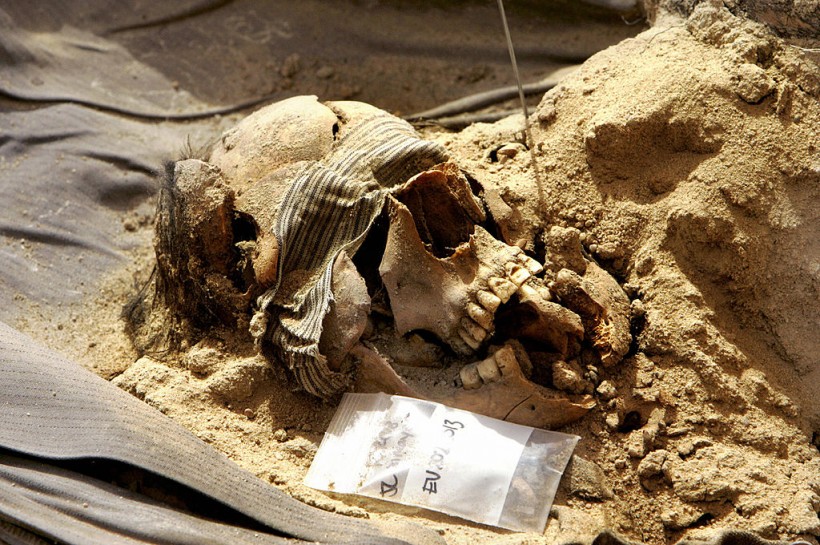A recent study recently revealed how two of the three mummified remains were brutally killed during their lifetime.
As specified in a ScienceAlert report, one secret of the past that can be revealed through the study of skeletons and skulls is how often violence was among human ancestors.
South American Mummies Were Brutally Murdered, CT Scans Reveal https://t.co/Oo8RHGh30Y
— ScienceAlert (@ScienceAlert) September 9, 2022
Nonetheless, with their preserved soft tissues, mummified remnants can be an even more telling sign than bones alone.
The remnant discoveries have brought the researchers to a new analysis of three pre-Columbian South American mummies, performed with 3D computed tomography or 3D CT scans that use X-rays to view the remains' internal state minus the need to open them up.
ALSO READ: Mental Health Discussions Opens To Aboriginal Communities

A human skull with a blindfold still on it and a little plastic bag with forensic records lie on a mass grave of skeletons after they were unearthed by forensic experts led by Michael Trimble in a shallow grave in a remote desert south of Baghdad.
Naturally Mummified Bodies
Essentially, naturally mummified bodies are created in dry environments when fluid gets soaked up by the body's surroundings faster than the decay rate. Such conditions are common in South America's southern part.
In this study published in Frontiers in Medicine, Andreas Nerlich, a pathologist from the Munich Clinic Bogenhausen in Germany, explained that they're showing lethal trauma in two out of three South American mummies that they examined with 3D CT.
The trauma types they discovered would not have been found if the human remains had been purely skeletons.
The male mummy from the Philipps University Marburg, Germany, originally belonged to northern Chile, formerly the Arica culture.
He most possibly lived in a fishing community and exhibited severe lung tuberculosis. With ages ranging from 20 to 25 years old, radiocarbon dating suggested that this man died between 996 and 1147 CE.
Signs of 'Interpersonal Violence' Identified
As for the male and female mummies from the Switzerland-based Art and History Museum of Delemont, the two may have come from the region of Arequipa in what is currently known as southwestern Peru.
According to a similar News Tech Review report, the study investigators identified signs of "interpersonal violence" in the two male mummies. The violence would have killed the two on the spot.
It would appear that the Marburg mummy died from a heavy blow to the head and a stab to the back, which may have come from one or two attackers.
As for the male mummy from Delemont, the study shows "massive trauma" against the cervical spine representing most possibly the cause of death, quite hard to the back of the neck, most probably caused him to die.
Damaged Skeleton
Even though the female Delemont mummy also had damage to the skeleton, it is believed it occurred after death, perhaps, during the burial.
The researchers said that the modern CT scans' availability, along with the opportunity for 3D reconstructions, provides a unique understanding of bodies that would not have been detected, the researchers said in their report.
Past studies would have destroyed the mummy, while older CT scans or x-rays minus 3D reconstruction functions could not have detected the key diagnostic features the researchers found here.
Related information about mummy discovery is shown on Crunch's YouTube video below:
RELATED ARTICLE: 800-Year-Old Bone Fragments of Woman Buried in Canoe Discovered in Argentinian Patagonia
Check out more news and information on Archeology in Science Times.


![Earth's Quasi-Moon Kamo‘oalewa Could Originate From Lunar Surface Not Asteroid Belt [Study]](https://1721181113.rsc.cdn77.org/data/thumbs/full/53275/89/56/50/40/earths-quasi-moon-kamo-oalewa-could-originate-from-lunar-surface-not-asteroid-belt-study.png)











